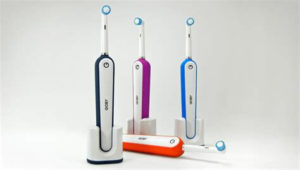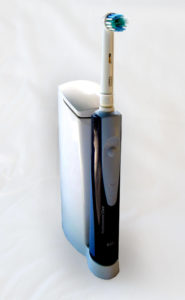In this Electric toothbrushes overview, we describe differences between the different types of electric toothbrushes so that you can choose which type you prefer. Electric toothbrushes have been around for just over 40 years. During this time, of course, they were developed further and further. If you are today facing the purchase of an electric toothbrush, you should inform yourself well with the abundance of offers.
Electric toothbrushes: overview
We cannot take the buying decision off your hands, but we can show you certain differences between the different types of electric toothbrushes.
On this basis you can at least select which type you prefer. Each of these electric toothbrushes has its advantages and disadvantages. Let’s go through them one by one and make a comparison.

What are the reasons for using an electric toothbrush?
According to some tests, the electric toothbrush is supposed to brush the teeth cleaner. Plaque should dissolve better and the bacteria are also better to fight according to the statement of the tests. What all electric toothbrushes have in common is that no pressure should be exerted to clean the teeth with the brush head. These are moved by batteries or a battery or vibrated by a sound generator and therefore the electric toothbrushes are also suitable for people who have motor weaknesses.
In general, an electric toothbrush makes it easier to reach hard-to-reach places, so that reliable oral hygiene is guaranteed.
Another advantage over manual toothbrushes is the gentle treatment of the gums during the brushing process. No great effort is required to clean your teeth thoroughly with the electric toothbrush and to prevent gingivitis. Therefore, it is also suitable for older people and children who find the effort involved in manual toothbrushing difficult.
What types are there?
The oscillating toothbrush
The brush head is driven and vibrated by a small electric motor integrated in the handle. It would be wrong to say that the brush head rotates, as is often claimed, because in fact it vibrates back and forth, similar to movements with the manual toothbrush. Depending on the model, the toothbrush operates at approximately 3,000 to 8,000 revolutions per minute.
The oscillating electric toothbrush is equipped with a relatively small brush head, which makes it possible to reach even inaccessible corners of the teeth. However, you should be careful not to apply too much pressure, as this could damage the tooth or the gums.

The rotating toothbrush
As the name suggests, this electric toothbrush works with rotating movements. Several small brushes are used and treat teeth like gums gently. However, we do not deal with this issue as rotating toothbrushes and brush heads can usually only be obtained from abroad.
The sonic toothbrush
It is probably the most common electric toothbrush at the moment. In contrast to the oscillating brush head, the brush head is not driven by an electric motor, but the brush head is vibrated by about 30 – 40,000 sound waves per minute. The sound waves make it easier to remove plaque and discolouration. The risk of injury to the gums is also lower with the sonic toothbrush. However, the vibrations caused by the sound waves in the mouth require a short adaptation period.
The price of the sonic toothbrush is slightly higher than that of the oscillating one.
The ultrasonic toothbrush
It is used less often and is often confused with the sonic toothbrush. It is highly recommended for people with physical difficulties or disabilities. The selection of ultrasonic toothbrushes on the market is rather clear, there are not so many models.
1.6 million vibrations per minute provide an extremely high frequency, which can be unpleasant for some from the feeling. It is also important to know that you are not allowed to use normal toothpaste here, but a special toothpaste. It is applied directly to the teeth before brushing. With a brush or a swab, the bubbles in the cream burst and clean teeth and gums very gently.
For comparison, here is also a video:
Conclusion:
-
- The most commonly used electric toothbrush is probably the Sonic toothbrush. It cleans very gently and yet highly effectively. It can be used by young and old, young and old. It offers an excellent alternative to the Hand toothbrush.
, especially for older people and children.
- The oscillating electric toothbrush is also a good choice, but teeth and gums should be healthy and not show any major damage.
- The Ultrasound toothbrush is recommended if the gums are already damaged and extremely sensitive because it works very gently.
- The rotating electric toothbrush is only recommended for braces.





5 thoughts on “Electric toothbrushes: overview”